- In your plays [in Japanese] there are often characters who talk in English. We are told that when you were young you lived in the United States.
-
That’s right. My father worked in a trading company and we lived in San Francisco from the time I was three until I was eight. During that time I went to three different schools, including the Japanese school there. The reason we moved was that a friend of my mother offered to lease us half of a big mansion to live in. My mother loves houses, and after returning to Japan we moved once purely because of my mother’s “house hobby” rather than my father’s business.
She is an “in-home artist.” One day when I came home from school the whole interior of our house was pure white. Not only the walls and furniture but even the hot-water thermos had been painted white (laughs). Later, I saw a photo of the house we had lived in before going to America and it was all blue! (Laughs) She liked to paint pictures and she was into cooking fancy recipes. But, my father was the opposite; he was very serious and strict. He would raise his hand in repute about one thing or another. But after getting older he mellowed on a completely different level (laughs).
- Do you see any influences from that time overseas remaining in your work today?
-
I was still just a child, so there isn’t anything specific I could cite. I remember that my parents made sure I studied Japanese while we were abroad because they were concerned about how things would be when we returned to Japan. But, at home my brother (two years older than me) and I would speak English at home back then. [In the U.S.] there were lots of children with different colored skin at school, so I never had any uncomfortable feeling about being different as a foreigner when I was there.
One of the things that was different compared to living in Japan was that we had parties at home almost every weekend, and I loved doing little skits or comedy routines at those parties. At the time we were living in the States, the news of John Lennon being shot and killed was a big thing, and I remember doing a skit with my brother recreating that shooting scene, even though we hadn’t seen it. My brother and I looked a lot alike and I remember we used to do things like dressing up in each other’s clothes and making people guess which one was which. But, these are not things that still influence my play’s today; they were just things that were fun to do as a child. But, in some ways it is still easier for me to do things like directing in English.
- What did you do after returning to Japan?
-
In our hard-working family (laughs) it was assumed that a boy should study hard, join a good company and then start a family of his own, both my brother and I went to college-affiliated prep schools with combined middle and high schools. It was a school that believed in training mind and body, so for a while I was on the volleyball team and then the basketball team, but the training was very hard and about half way through 10th grade my father told me to quit sports so I could concentrate on studying for the college entrance exams. But, I secretly continued, and I also formed a band with some of my friends. Also, I used to fill notebooks with poems in the style of Kamachi Yamada’s raging of the spirit.
- Did you have an inherent love of writing?
-
Now that I think of it, when it was decided that we would do a class play in elementary school, I decided to write a play myself. I did it because for some reason I had the feeling that I could write something more interesting than the others. And, I remember that when we had to write a composition in school, I would use my imagination and write something like a short story; I liked fiction.
- As soon as you entered Aoyama Gakuin University you joined the drama club. Did you have any connection with theater before that?
-
Nothing other than seeing a musical by the Gekidan Shiki company. But, while I was studying for my second try at the college entrance exams I started watching videos of the plays of Hideki Noda and Koki Mitani that were popular at the time on the satellite TV “Theater Channel.” I remember how interesting that was to me at the time.
My brother was making films at university and I had liked film from the time I was in high school, so at first I was planning to join the film club. But soon after my freshman year started the drama club members were handing out leaflets for a welcoming play for the new students. It was a performance at the Ikebukuro Shogekijo theater and I went to see it. Everything about the performance was stimulating, with devices like all the actors reciting in unison and sudden black-outs of the stage. I had goose bumps the whole time. By the time that performance was over I was convinced that I just had to do theater if it caused goose bumps like this. So, I joined the club right away.
- You wrote a play for the newcomers performance soon after entering the club, didn’t you?
-
At the time I had the idea that I could write (laughs). I wrote a comedy that was like a fairytale about a lonely boy and a chair in a fantasy setting, and it was fairly well received. I didn’t have any specific goal like becoming a playwright or an actor, I just wanted to be involved in this form of artistic expression called theater. So I was practicing harder than anyone. I would be in the club room alone playing a video as I rehearsed, doing voice exercises or practicing stop-motion and other basics; everything about it was simply so fun and interesting to me. Anyway, I was at my most aggressive and charismatic at that time. I heard later that others called me the “child prodigy” (laughs).
- At the same time you were active in the university’s drama club you were also receiving instruction from directors and others on the small-theater scene in programs like that of ENBU Zemi (*). Did you have the idea of becoming a theater professional at such an early stage?
-
At the time, I had no thoughts of becoming a professional and making my living in theater. I simply had a strong desire to experience a full variety of different type of theater, so whenever I saw a leaflet for a workshop, I would usually sign up immediately for it. And, whenever I found out about a new theater company in the magazines, I would automatically want go see one of their plays, as long as I had the time and the money. I didn’t have any particular expectations regarding what I went to see, so I ended up seeing a lot of different things. Companies like Better Pause theater company that my brother’s friend belonged to, and Papa Tarahumara, Nylon 100 °C, Yuenchi Saisei Jigyodan, Otona Keikaku led by Suzuki Matsuo who had been trained at ENBU Zemi and Yamanote Jijosha, all of them had their own style of expression that made the small-theater scene at that time so interesting to me. I also liked Strange Kinoko Dance Co. (Mezurashii Kinoko Buyodan).
- In addition to theater you also got involved with performance and dance companies, didn’t you?
-
I still like things that involve vigorous physical movement or special ways of using the body. Since I was a child I have always like physical activity.
- How did it feel working with [Suzuki] Matsuo san? It seems to me that Matsuo san’s plays are full of characters steeped in sin, while in contrast the characters in your plays tend to be weak and somehow inept.
-
In my senior year in university, instead of doing the usual career job-hunting like everyone else, I took part in the ENBU Zemi seminar taught by Matsuo san. Until then I had only seen three of his plays,
Chongiritai, Drive in California
and
Ikiteirushi, Shindeirushi
, but they all had such a strong impact on me; I was really excited and inspired after seeing them. Also, I like the way he created pictures on stage.
I am not one who has any particular traumas or worries, so it might seem strange that I associate so strongly with Matsuo’s plays with characters living in the lower depths of society. But, when I think about it, the poems I filled my notebooks with in were extremely dark in ways that make me think that perhaps unconsciously I was seeking out people’s hidden aspects and darker sides with the feeling of someone who had been lied to or deceived. That may be why I enjoyed Matsuo san’s style of taking the energy of those types of negative feelings and turning them into entertainment.
- What types of things did you learn in Matsuo san’s seminars?
-
We did workshops in which we would be divided into groups of about four and spend a week working together to create a roughly 15-minute work. Matsuo san only had to say a word or two, like, “That’s going too far; it sounds untrue,” to make me realize the importance of the [honesty and sincerity of the] internal element. By nature, Matsuo san is a shy person and doesn’t instruct much in direct words, however.
Also, I participated in the Otona Keikaku company’s work Fukusuke as a seminar participant. That was an important experience for, seeing professionals put together a production over a period of about one month. I was given a speaking part in the script but I overdid it once in a rehearsal and broke a bone in my leg that really devastated me. But, Matsuo san wrote in another part for me that I could do on crutches. He is very good at taking unexpected happenings and skillfully working them into the play.
- Then, in May of 1999 you became the leader of your own company by forming Haegiwa.
-
There was a group of us who had been together in the ENBU Zemi and we wanted to continue working together for a while, and there was also a big element of simply wanting to the kind of theater I wanted to do. At first it was a rather loosely bound group that you might call a unit, but it turned out that we needed a theater company name in order to rent the rehearsal studio and theater for performances. For some reason we settled on the name Haegiwa (hairline), but I can’t remember who thought of it or what the origin of the name was (wry laugh).
- By the end of that first year of the new company you did three plays, which was quite a busy start. At that time, what type of theater were you intending to do.
-
As a creator, I think I had discovered the joy of thinking up plots that developed in completely unexpected ways. The important think is the way the idea develops and how to actually show it on the stage. With each new work we would get excited, saying that surely no one had ever done anything like this before. Although, there is probably nothing that only we have done.
However, at first, a large part of what I was doing was as an actor. It was usually as a sort of alternative main character, so in one sense I was writing as a playwright the kinds of roles I wanted to do as an actor. I have ambitions as an actor, but lately I have to spend so much time as a writer and in working up the plays in the studio that I am spending much less time on stage as an actor.
- Would you tell us something about your style as a playwright?
-
We have our company members, so the actors in our plays tend to be decided from the start. For that reason I am often writing parts with particular actors in mind. Also, there are often “pictures” that come to mind first, so I am frequently writing scenes or stories afterwards to bring that picture to the stage. Examples are our company’s second official production
Hitohada to Hanajiru
(1999) that started with the picture of a girl hung upside down and our 13th production
Furrashu aa aa Koiseyo Otome
(2004) where I was interested to see if we could use a swaying stage to express the experience of an earthquake. We ended up creating a stage set that could be swayed by pushing on it manually and nearly the last 40 minutes of the play were performed while swaying the set. One of the results was that some of the audience showed symptoms of motion sickness (laughs).
I still work in a style where a new work usually doesn’t have a clear theme or subject when I start writing but I find it along the way.
- In the middle period with Furasshu we see you using a public toilet scene and the room of a stay-at-home youth, and in more recent works like Tori to Odoru (2009) you use a small room with an electric fan as the only prop, while in Harubaru (2010) you create something like a fort with a complex piling of chairs, and in ○○ Toaru Fukei (2011) you use holes that a separated former couple fall into. In these ways your works often employ closed spaces that are isolated from the outside world.
-
That may be true. I don’t know about isolated spaces in general, but I do have a thing about toilets. In
Garapakosupakosu
(2010) the characters draw the floor plan and furniture of the home on blackboards as the play progresses, but I have the main character draw the toilet first. The toilet is a space that you enter alone and what is seen there is a degree of unadorned self that you don’t usually show in front of others. I like that kind of space where you can see aspects of people that are normally never seen. Even if you have an isolated space and, for example, you try to escape into it, there will always be pressure from the outside working to drag you out, and in the end you have to come out. But, I want to find a ray of hope in the exchanges that take place in that process. Human beings can’t live in isolation for long, I believe it is important for us all to interact with people.
- Indeed, many of the characters in your plays seem inept and weak of will and tend to think negatively, and yet the endings usually provide a positive note of hope.
-
In my plays, you could say that I only include characters that I like, or that I don’t write about characters I don’t like. When I write I want to find at least one endearing aspect of character no matter how bad they may be otherwise. For example, when I see a person on the street who raises hell because someone has accidentally bumped his shoulder in the crowd, I imagine that he surely has another side that smiles warmly in front of people he likes, or maybe he wears pajamas with an unexpectedly cute design. This aspect is the exact opposite of the way I sought out people’s dark sides when [I wrote poems] in high school (smiles).
- In your 13 years of activities with Haegiwa, have there been any events or any works tat you see as a turning point?
-
To be honest, I don’t think I have achieved or established anything yet that would warrant looking back for some turning point, but I do feel that participating in the international joint workshop of the Asia Performing Arts Festival produced by Satoshi Miyagi (2009) was a very important experience for me. It was a situation where I was working with actors from Seoul and Manila, with a group of ordinary housewives included, and we didn’t understand each other’s languages and the theatrical working methods I had been using until then were completely unviable. It was also a case where we would not have the use of subtitles in the final work we created and performed at the end of the workshop. Since most of the people that would be coming to see that performance knew nothing about my plays, I was forced to think about what I could possibly share with those people through theater. The result was the discovery that by being shown a flow of universal emotions and movements that transcended words, there was a common heart that could be shared. After that experience, it became clear to me that I wanted to do performances overseas as well. So, I have been working on English translations of
Galapakosupakosu
when I have the time.
Another experience that has been important for me was having the chance to create the work Cha-cha-cha no Charlie – For example, a story about a doll that fell in love to perform at homes for the elderly on an outreach project of the Setagaya Public Theatre. It was a 40-minute 4-person play telling the story of a marionette puppet that falls in love with a human girl, which for me was quite a straight-forward fantasy piece. Since it was performed at the various nursing homes for the regular resident patients as a part of their recreation program, there were always some residents that don’t understand the word content anymore and other is a variety of different levels of understanding and mental/physical conditions. With each performance in places like these I can’t help but ask myself what parts of the play will remain with the elderly who watch. And, at the same time, there are some of them who surprise us by shedding tears of joy when they see the performance, and we also see the joy of their families seeing that kind of reaction in their elderly.
These have been two creative opportunities that have brought me realizations about theater that I had never even thought about before.
- We hear that your play Galapakosupakosu , where you have a young man who works as a clown in a part-time job meeting an elderly woman who has begun to suffer from dementia, was inspired largely by your experiences doing performances at homes for the elderly.
-
Yes.
Galapakosupakosu
is a work that I started with the intention of making a lay around those inexpressible feelings I got from that time. I wanted to try to create images of “aging” that were not completely negative, to not restrict aging to retrogression but to see it as a new evolution following a set of changes. Everyone, including myself, eventually gets old, so I didn’t want to dismiss it as a purely negative image. Because, the state of the people that I met in those homes did not appear to me only a sad one.
- When I watched your plays like Galapakosupakosu and Harubaru , I feel there is a process in which you write lines that are exactly the kinds of true feelings people would normally keep inside in order to avoid destroying their relationship with another person, but once said, those words actually provide an opportunity for the characters to overcome the problems that stand between them. This method seems to me to be your own unique and original dramatic device. Do you do that intentionally?
-
Well, now that you mention it, I realize for the first time that I may be doing just that (laughs). In
Harubaru
, I created a role of a man who blurts out his true feelings, and by having him say what he feels I was relieving my own frustrations. In
Garapakosupakosu
, there is also a process in which such confessions of true feelings intertwine as the plot develops, so I guess it may be true that I like those kinds of conversations.
But, I feel that I am still at a stage where I don’t want to define my theater or the theater of Haegiwa in terms of such traits or to have them defined by others in such ways. As long as it is possible, I want to continue finding new methods and search for new forms of expression. And in fact, both myself and the members of our company are actually changing rapidly with each new work we do. The motivation driving us as we work up new plays in the studio are different each time, and our interests and ideas change, so that is how I want to continue to create works, honest to those changing interests and ideas.
- How did you create your latest work, I’m (w) here ?
-
The creative process doesn’t begin with the writing of the play. First I take the basic ideas into the studio and have the actors begin searching for movement based on the ideas and doing etudes to expand on the ideas to them. In this process, we get what you can think of as an accumulation of small discoveries. A lot of time is spent in this process and, once the ideas come together to some degree, I begin to work alone to put it all together into the actual form of a play. One of the main guidelines is to immediately throw out anything that doesn’t seem interesting enough. Sometimes, however, I feel that I am a bit too quick to discard things that might have gotten better if I had worked on them a little longer.
Also, I have an increasingly strong feeling lately that I want to fill the theater space solely with words and the physical presence of the actors, keeping the stage art very simple, and in the process our forms of expression are more and more analog. You could even say that it is becoming more primitive; for example I find myself thinking of devices like limiting the stage art only to pages torn out of notebooks.
- What is your standard for deciding what is interesting and what isn’t?
-
There are no words to describe it other than feelings and my [physiological] nature (laughs). From the things I have been saving until now, I think you can see that I am not the one who is able to analyze myself or my works theoretically. So, it is difficult for me to speak in terms of creative methodology or explain my works in words. And, for that reason, I never want to be untrue to my feelings or sensibilities or to waver from what I feel is right.
One thing I can say, however, is that because my approach is different with each play, I can never get the satisfaction of saying, “I did what I set out to do!” when the performance is over. In that sense, I get the feeling that I am repeating a process that doesn’t bring satisfaction or a rewarding feeling. And that may be why my plays are full of characters who never get satisfaction but, also, they never get discouraged.
- Considering the presence of such characters and other factors, do you feel that the environment you have grown up in and the view of people it has nurtured in you, the way you build human relationships and the way you see things all influence your works?
-
I don’t know if I am successful in reflecting all those things in my works, but I do want to reflect it all in my works. This life of mine is mine alone and I want to believe that what is born from it is the most original part of my creations. I want an artist whose work stands on a solid ground of all the things that I have accumulated and nurtured on my own and not swayed by others.
In fact, I ask the same thing of my actors, too. Although as an actor they may be asked to give expression to a fictitious character or words that are different from themselves, I often tell them that however distant that character may seem [from themselves], they should still retain an essence of themselves in its roots. I tell them, “That is why you are here, and that is the place where you will shine the brightest.” Even though they will use their skills as actors to change their outer visage, I want them to remain themselves at their core. In the same way, as a playwright, as a director and as an actor, I feel very strongly, especially now, that I want to be an artist that brings everything I have experienced in my life into my art.
Seiji Nozoe
Seiji Nozoe’s small-theater adventure, a world moved by quiet “mutterings”
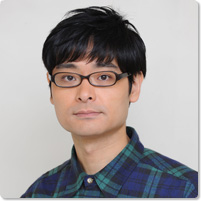
Seiji Nozoe
Playwright and director Seiji Nozoe was born in Okayama Prefecture, Japan, in 1975. He was raised in the U.S. to the age of eight. In 1999, he started the theater company Haegiwa. Since then he has written and directed all the company’s productions, also participating as an actor in them. He is also active as a writer of scripts for radio and movies and as an actor. His plays are praised for their portrayals of the delicate inner self in stories interjected with surreal humor and strange but convincing reality. As a director he has won acclaim for his artful use of the theater space in creating dramatic spaces that are abstract and yet succeed in stimulating the viewer’s imagination. In recent years Nozoe has expanded his scope of activities to included directing foreign plays, touring works to homes for the elderly, producing works in different regions of the country and creating video works. His representative works include Tori to Odoru , Ju, Myo. Piyo , Harubaru – Hasumukai no share (nominated as a final candidate for the 55th Kishida Drama Award), Garapakosupakosu – Shinka shitennoka shitenainoka and others. With each play he attempts new approaches and continues to re-invent his style.
His company’s Home Page URL is:
https://haegiwa.net/
Interviewer: Kumiko Ohori
*ENBU Zemi
A school for actors, playwrights and directors established by Engeki Book Sha (current Enbusha) that formerly published the theater magazine Engeki Book. Later a film department was also added and since 2002 it has been a unique comprehensive school with instructors who are active on the front line of today’s theater and film scenes.
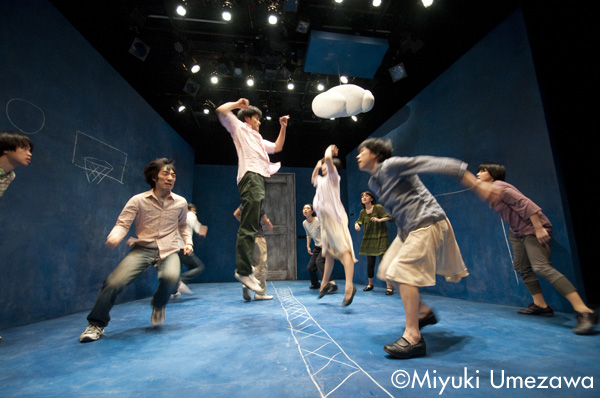

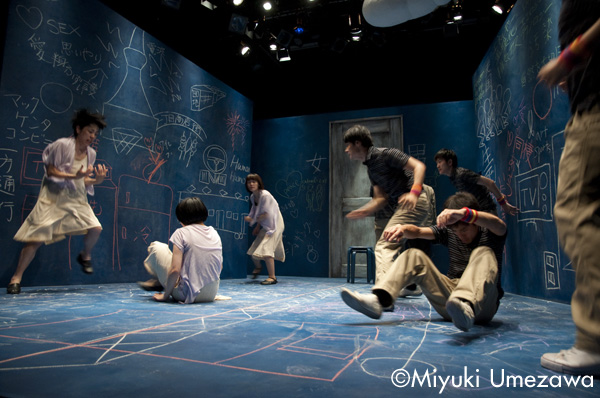
Haegiwa’s 23rd performance
○○ toaru fukei
(Jul. 2011 / Shimokitazawa The Suzunari)
Photography: Miyuki Umezawa

Haegiwa’s 21st performance
Harubaru – Hasumukai no share
(Jan. 2011 / Shimokitazawa The Suzunari)
Photography: Miyuki Umezawa
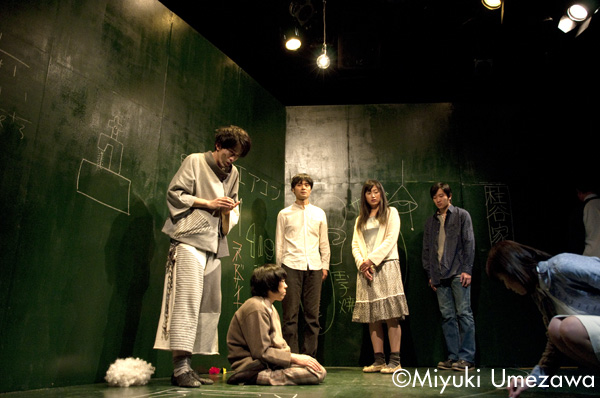
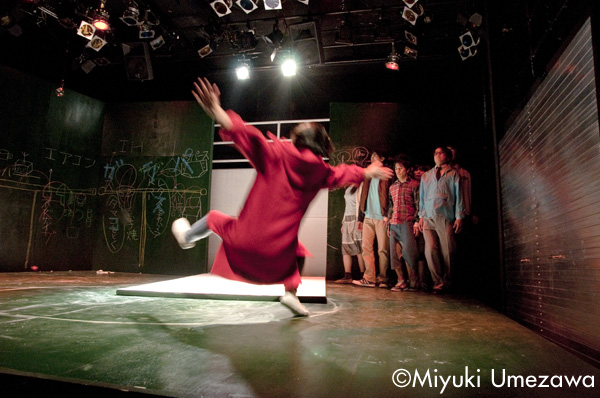
Haegiwa’s 22nd performance
Garapakosupakosu – Shinka shitennoka, shitenainoka
(Dec. 2010 / Komaba Agora Theater)
Photography: Miyuki Umezawa
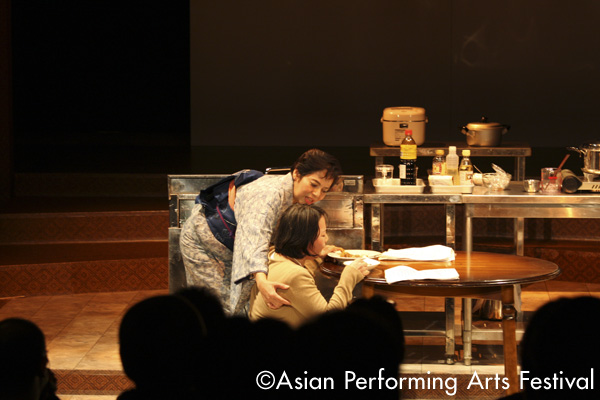
Asia Performing Arts Festival 2009, Tokyo “Asian Kitchen” Manila version
(Nov. 2009 / Tokyo Metropolitan Theatre Small Hall 2)
©Asia Performing Arts Festival Committee
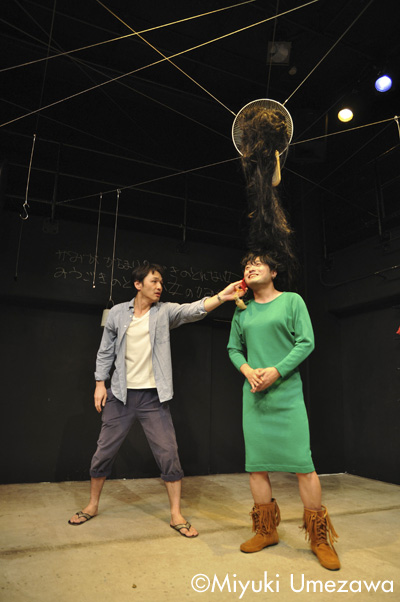
Haegiwa presents
Mayonaka vol.3
Tori to Odoru
(Oct. 2011 / Komaba Agora Theater))
Photography: Miyuki Umezawa
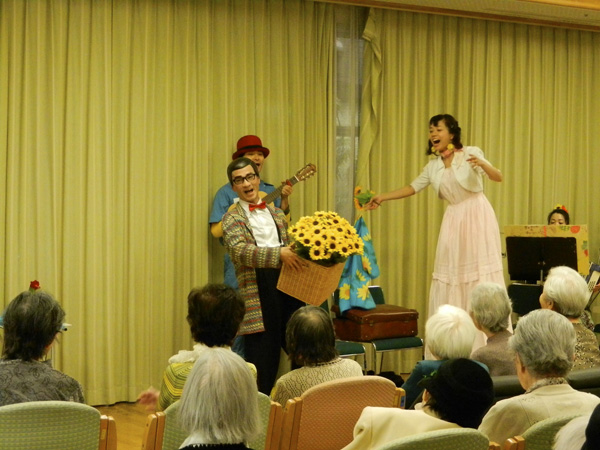
Setagaya Public Theater production “@ Home Theater”
Cha-cha-cha no Charlie – Tatoeba koiwoshita ningyo no monogatari
(Jul. 2012 / Home for the Elderly in Setagaya-ku)
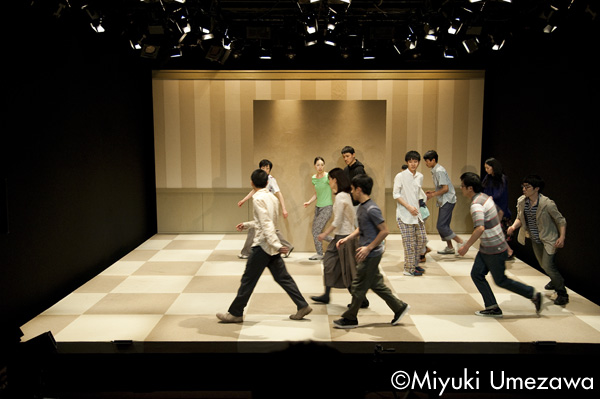
Haegiwa’s 24th performance
I’m (w) here
(Jun. 2012 / Shimokitazawa The Suzunari)
Photography: Miyuki Umezawa
Related Tags

